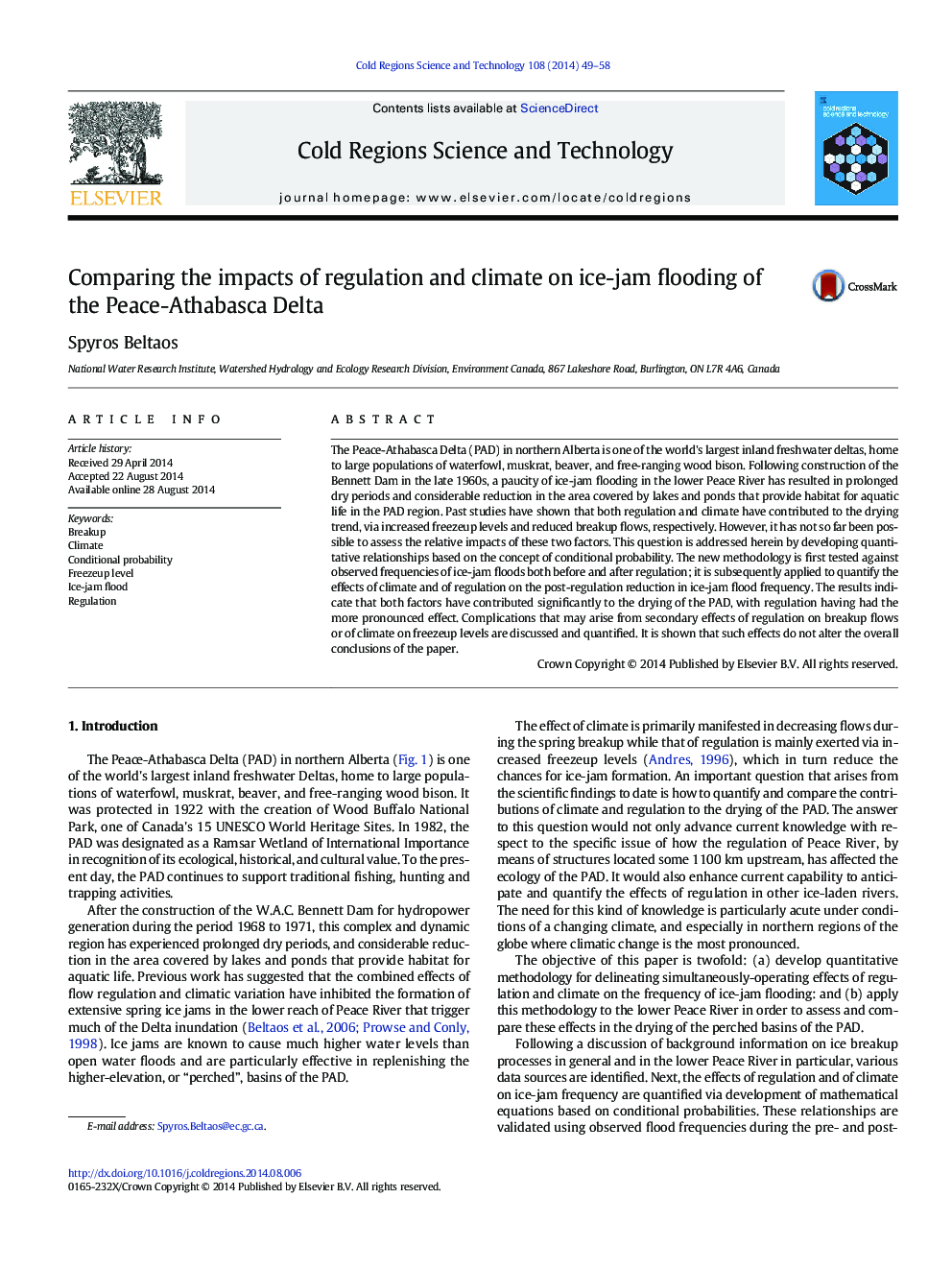| کد مقاله | کد نشریه | سال انتشار | مقاله انگلیسی | نسخه تمام متن |
|---|---|---|---|---|
| 4675769 | 1634456 | 2014 | 10 صفحه PDF | دانلود رایگان |
• Drying of Peace-Athabasca Delta has been attributed to climate and regulation.
• Higher freezeup levels and reduced breakup flows are the principal factors.
• Relative impacts of these factors have not previously been evaluated.
• Methodology is developed, validated, and applied to quantify them.
• Both effects found important to drying; regulation effect more pronounced.
The Peace-Athabasca Delta (PAD) in northern Alberta is one of the world's largest inland freshwater deltas, home to large populations of waterfowl, muskrat, beaver, and free-ranging wood bison. Following construction of the Bennett Dam in the late 1960s, a paucity of ice-jam flooding in the lower Peace River has resulted in prolonged dry periods and considerable reduction in the area covered by lakes and ponds that provide habitat for aquatic life in the PAD region. Past studies have shown that both regulation and climate have contributed to the drying trend, via increased freezeup levels and reduced breakup flows, respectively. However, it has not so far been possible to assess the relative impacts of these two factors. This question is addressed herein by developing quantitative relationships based on the concept of conditional probability. The new methodology is first tested against observed frequencies of ice-jam floods both before and after regulation; it is subsequently applied to quantify the effects of climate and of regulation on the post-regulation reduction in ice-jam flood frequency. The results indicate that both factors have contributed significantly to the drying of the PAD, with regulation having had the more pronounced effect. Complications that may arise from secondary effects of regulation on breakup flows or of climate on freezeup levels are discussed and quantified. It is shown that such effects do not alter the overall conclusions of the paper.
Journal: Cold Regions Science and Technology - Volume 108, December 2014, Pages 49–58
